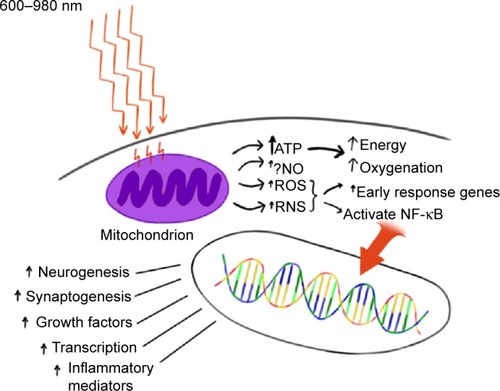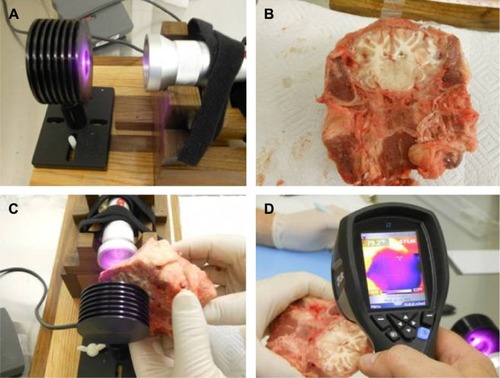Figures & data
Figure 1 Hypothesized mechanism of action of near-infrared light (NIR) photobiomodulation.
Abbreviation: ↑, increase.

Table 1 Data on infrared light penetration of ex vivo skin samples
Figure 2 Ex vivo human skin studies illustrated.

Table 2 Data on infrared light penetration of ex vivo human skin samples
Figure 3 Ex vivo brain tissue studies illustrated.

Table 3 Data on infrared light penetration of ex vivo lamb skull, tissue, and brain
Table 4 Data on infrared light penetration of in vivo human tissue
